


FAYETTE R. PLUMB

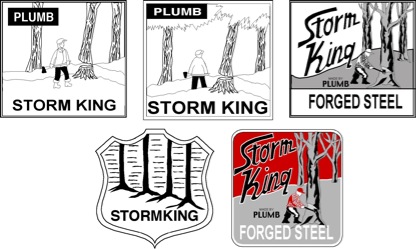
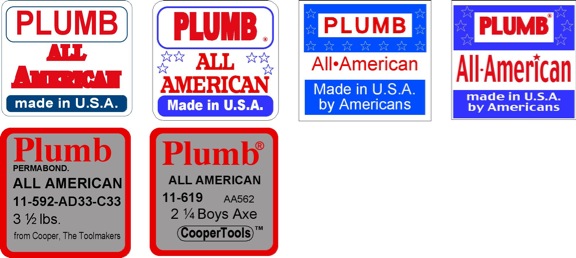

PLUMB CHAMPION AXE
The Plumb Champion brand and markings were introduced sometime in the late 1920s and were continued for a good number of years; possibly in the early 1940s. The specific years involved are questionable but the discontinuance of the mark could have been influenced by the material restrictions during WW II or the reduction in wood chopping competition events. Initially the mark was to commemorate the achievements of Peter McLaren as a champion wood chopper. McLaren was from Melbourne, Australia. Apparently he was using a Plumb axe when he captured the wood chopping title in that country. Not long thereafter Plumb started to use advertisements touting McLaren's choice of axes. It appears they also hired him to give demonstrations or at least make guess appearances. McLaren is also credited with writing what was called the Axe Manual of Peter McLaren, America's Champion Chopper. The inclusion of "America's Champion Chopper" suggests McLaren was either originally from America or also involved in wood chopping contests in America, perhaps even both.
The "Champion" (as most collectors know it) was advertised for "expert choppers." It was not specifically made for competition and was probably used by a number of choppers, not just experts. It was marketed in the US and Australia and possibly other places such as New Zealand. Axes with a star mark as well as some other symbol markings on some examples suggests they were made for the export and possibly the Australian market. No conclusive evidence is known that verifies that axes with symbols as touch marks were guaranteed to be exported to Australia however numerous axes with such marks have been observed in Australia while considerably fewer have been observed in the US.
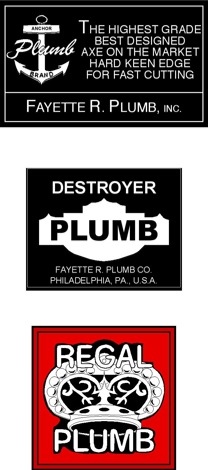
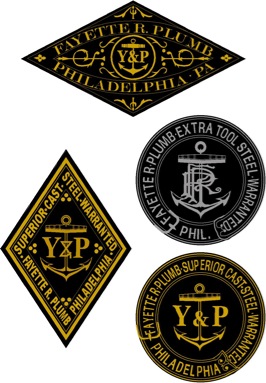


PHILADELPHIA, PENNSYLVANIA 1887-1990
St. LOUIS, MISSOURI 1910-1971+
By Tom Lamond ©
After completing his formal education, Fayette R. Plumb is reputed to have taken a job with the distinguished hardware concern of Lloyd, Supplee & Walton in Philadelphia. That was in 1867. His intent was to learn the hardware business. Two years later he formed a partnership with an established hammer manufacturer by the name of Jonathan Yerkes.
Jonathan Yerkes was initially engaged in tool manufacturing in Moreland, Pennsylvania. Sometime around 1856 Yerkes relocated his manufactory to Frankford, Pennsylvania.
In 1869 Fayette R. Plumb bought half of the existing firm of Jonathan Yerkes. Engraved pictures of the manufactories that were included in the Fayette R. Plumb Catalog dated 1888 show the works in 1856 and 1864 with the name of Jonathan Yerkes only. Almost immediately after the partnership was formed the construction of a completely new works was commenced in what was considered an industrial section of Philadelphia. That complex was located at the corner of Church street, near properties and facilities of the Pennsylvania Railroad.
The pictures of the new works in 1869 and later in 1881 include the titles Yerkes and Plumb. By 1888 the pictures included only the name of Fayette R. Plumb. That reflected the complete takeover by Plumb in 1887 which had occurred with the retirement of Yerkes in April of 1886. Actually Jonathan Yerkes initially disposed of his holdings in the company to his brother Edward A. Yerkes. Apparently shortly thereafter Edward A. eventually sold out to Plumb but the Yerkes & Plumb name was maintained for a while.
The Plumb Co. bought the Washoe Tool Mfg. Co. in 1889 so they could increase their capacity to produce mattocks and picks. At that time Washoe was located on Staten Island just south of New York City. They had originally been established in Newburgh, New York then relocated to Newark, New Jersey prior to relocating to Staten Island. Indications are that the Washoe equipment was relocated to Plumb’s Frankford works shortly after the purchase.
After taking over the entire company, Fayette Plumb continued to use the YERKES & PLUMB brand name along with the marking Y & P printed together with an anchor because they were established brands and the markings were widely recognized. Plumb also introduced similar labels that excluded the name Yerkes and gradually the Yerkes name was deleted altogether. The extent of the overlap is unknown but believed to have been necessary until at least all the stock that included the name Yerkes was depleted.
Eventually Plumb added a number of other brands to his offerings. The primary brand, carried over from YERKES & PLUMB, was actually called the ANCHOR BRAND and that was possibly used into the 1930s.
In 1910 the company commenced construction of a plant in St. Louis, Missouri. The project was overseen by Calvin Perry Bascom, who upon completion of construction became general manager of the St. Louis facility.
As time went on the company came under the control of the next Plumb generation and subsequently the third generation. During the entire span of time that the company was run by the Plumbs, other brands and a wide variety of marks and labels were used.
Very early brands included JAMES WEST & CO. and the VULCAN TOOL CO. Initially these two brands were considered second quality. The name Q. C. Mfg. Co. was also used at the time for what was considered a third quality line. Over the years the Q. C. Mfg. Co. mark became the QUAKER CITY MFG. Co. label and was used to supply wholesalers with a somewhat less expensive line.
The PHILADELPHIA TOOL CO. line was added later. This was done as a result of Plumb actually buying the Philadelphia Tool Co. which was located in the same city. Apparently the Plumbs were quite patriotic. This observation is based on a number of brands and labels that the company used over the years. Plumb also manufactured a number of tools, mostly axes and hammers, under the brand names belonging to a variety of major hardware wholesalers.
Reportedly the death of the last of the Plumbs to manage the company was in 1959. The management details are a bit sketchy for the next decade but in 1971 the Plumb Company was acquired by the Ames Co. The Ames Co. had been acquired in 1955 by Bernhard McDonough, a major businessman headquartered in Parkersburg, West Virginia. Indications are that after 1971 production by the Plumb division consisted of axes, hatchets, hammers and sledges. Production of Plumb files may have been discontinued by that time. The broad line was generally referred to as striking tools. For a time production was in Monroe, North Carolina and then Parkersburg, WV. In turn the name Plumb was then noted as part of a brand printed on labels and in advertisements along with “AMES, A McDonough Company”. In 1981 the Plumb division of Ames was sold to The Cooper Group who either divested some of the Plumb assets into other areas or sold off whatever remained.
The time frame and diversity has yet to be defined but reliable information reveals that sometime in the 1970s and/or 1980s some Plumb axes were being manufactured by the Mann Edge Tool Co. of Lewistown, PA.
As of this writing it is understood that any contemporary Plumb striking tools being manufactured are being made outside the continental United States, primarily in China. The specifics have not been completely verified but it is believed manufacturing was being done in China.. The parent company was still the Cooper Group in 2010 at which time they continued to provide some hammers and some hatchets but Plumb axes are no longer made.
During the time that Plumb was renowned worldwide for their axes the company generated and maintained a coveted reputation in other countries, one of which was Australia.
Like many other major axe and striking tool manufacturers Plumb also provided goods with labels and etchings representing wholesalers. Many of the etched hatchets and axes were sold through major hardware wholesalers but a significant number of the Plumb made tools were not marked as such. They bore only the mark of the distributor.
Less known are axes and hatchets with special etchings. Plumb provided presentation pieces and produced commemorative tools as well as what were considered advertising goods. Those goods bore the name and markings representing a specific company or product not normally associated with chopping or the utilization of a chopping tool.
YERKES & PLUMB
FAYETTE R. PLUMB CO.
FAYETTE R. PLUMB INC.
Owned by Others
AMES CO. (a McDonough Co.)
COOPER GROUP
1869-1887+--
1887-1893-- -
1893--1971- -
1971-1981- --
1981-2000+--
Early stampings used after Fayette R. Plumb bought out J. Yerkes. Note the different anchors in the two Yerkes & Plumb markings.
Labels and stampings used on tools made with the best refined iron with the points and bits being made of cast steel. Hammers in this group were carefully tempered and finished. The labels were black & white.
Labels depicted in the 1888 Fayette R. Plumb catalog indicated that most F.R. Plumb labels were modifications of those previously used by Yerkes & Plumb and at the time all were still being used. Both the round and diamond shaped labels were used in different sizes.
Facsimiles of paper labels used just after Fayette R. Plumb took complete control of the company.
Label and stampings used on tools made with solid cast steel with the points and bits being made of tool steel, carefully tempered and finished. The labels were blue & white.
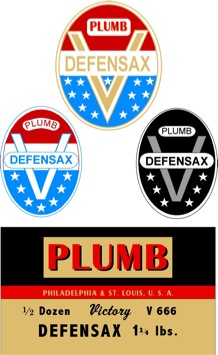
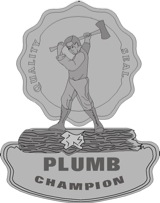
Representations of “gold” filled etching, plain etching (usually high lighted from use) and painted etching for Plumb Champion axes.
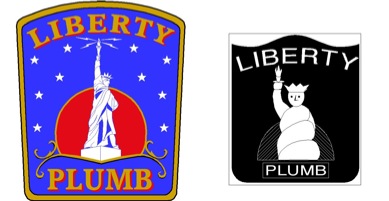
PATRIOTIC LABELING
Some brands and accompanying labels used by Plumb represented patriotic themes. Many of these brands emerged during and immediately after WWII. Some were continued for quite some time, even to the point of being carried over to the successors of the original Plumb Company. While some started as detailed images time often resulted in simplification. So too did catalog representations.

Etching examples used as advertisements and by a California hardware wholesaler.
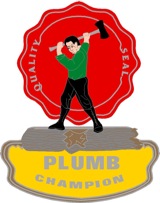
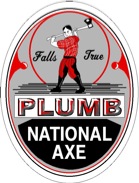
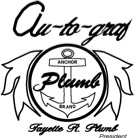
The Au-To-Graf etching was used on a line of axes considered to be of the highest quality.
Label used on Plumb Special Pattern axes.
Label used on Plumb axe, date unknown.
One use of the Regal Label was on fire axes.
SECOND QUALITY MARKINGS
Like many axe manufacturers, Plumb marked certain goods with labels that were sold to the retailers as “second” quality and even "third" quality. Some of the labels associated as “second” and "third" quality were offered by some hardware concerns as independent manufacturers thereby permitting retailers the option to sell them at a slightly more competitive price. In reality the "Companies" shown were brands treated as subsidiaries.
Facsimile of Liberty label as it was used on actual axes.
Facsimile of Liberty label as it appeared in some distributor’s catalogs.
The Plumb Anchor Brand was depicted on axes in a number of ways. Some of the etchings had the color red applied within the background area, some were just plain metal or completely black as the head was originally painted.
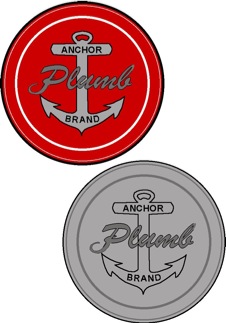
Paper labels similar to the facsimile on the right were introduced after the name Plumb Champion was retired.
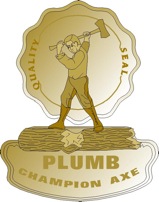

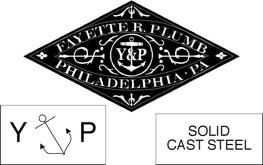
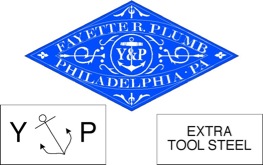

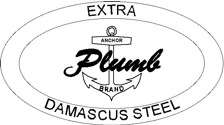
Representation of impressed marking.
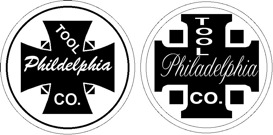
The PHILADELPHIA TOOL CO brand was used on hammers and hatchets but not axes.
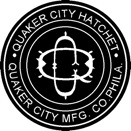


The larger square labels depicted above were applied to axes. The other labels and marks were used on hatchets, hammers, wedges and some other forged tools.
Early paper labels used on some second and third grade quality tools.
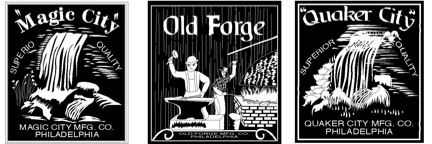
Second Quality
Marking
Third Quality
Marking
PLUMB MARKINGS INSIDE A RECTANGLE
One of the most recognizable markings used by Plumb started to be used in 1917 and continued along with a couple of variations possibly until the 1980s. The actual mark was not registered until 1920 as it was a common occurrence not to register marks until they had been used for some time. This frequently was the result of Patent Office practices and Copyright Laws.
The DEFENSAX was advertised during WWII as a necessity in the event of attack.
Stampings were used to identify hatchets and trenching tools for military use. Quite frequently the markings on hatchets also included the year in which it was made.
Labels with patriotic themes were quite popular immediately after WWII The design on the left was what the actual labels looked like. The one on the right was used in some distributor catalogs.
Plumb marking originally used by Fayette R. Plumb Co. in 1917. Registered as Trademark No. 138088, dated 1920.
Plumb marking used as early as the 1920s.
Plumb decals were used on some axe and hatchet heads.
Plumb marking used by the Cooper Group. They also renewed the original trademark but contemporary Plumb striking tools do not include a rectangle around the name.
The initials U.S.A. were included below both the square cornered and the rounded corner rectangles on a number of axes, hatchets, hammers, other striking tools,wedges and files.
LABELS ASSOCIATED WITH THE ST. LOUIS PLANT
Labels used after 2000.
Various labels were depicted in catalogs and represented with similar designs. Some were used on hatchets, others on axes. It may be that the simpler designs were produced for catalog reproductions while some of the actual labels were more detailed.
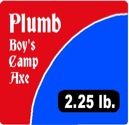

A number of brands were offered soon after the St. Louis plant was opened. Some were labeled from Philadelphia as well as St. Louis.
Indications are that Plumb was the company that manufactured a variety of advertising hatchets, At least three companies providing such hatchets were major shoe distributors. Other were Coca Cola and Purina Feeds. Plumb made axes as well as hatchets with customized markings. Another feed company that availed itself of advertising on Plumb axes was MoorMan’s Feeds. Interestingly the word Every is misspelled ... Eevery”.
CUSTOM MARKINGS
It is believed that the hatchets with the "dog" design as well as the "duck" design were originally sold through the E. C. Simmons Hdw. Co. and later provided through the Shapleigh Hardware Co. The duck designs have been observed with and without color and with and without the Keen Kutter logo. The same is true for the dog designs. Another “outdoor” design has been reported that includes a couple of quail taking flight but as of this time a definitive reference has not been become available.
The customized examples with dates were provided after Shapleigh acquired E. C. Simmons suggesting that they were special orders, probably directly from Plumb. The examples of markings involving the names of individuals may have been ordered through Shapleigh but they were made by Plumb. Examples have been observed with other individualized designs suggesting that such special orders were popular for a number of years. Some of the markings have been identified as being directly related to organizations while some have yet to be connected to any specific group or company.
Facsimile of a label specifically used on some of the axes made in St. Louis.
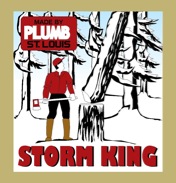
Various labels were depicted in catalogs and represented with similar designs. Some were used on hatchets, others on axes. It may be that the simpler designs were produced for catalog reproductions while some of the actual labels were more detailed.
Labels emphasizing the axes were made of solid steel.

Variations of labels used after 1981.
The Dreadnaught brand was used on axe labels from the 1930s until possibly the 1960s.
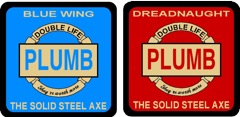
ADVERTISING EDGE TOOLS
Numerous hatchets and a few axes were made by Plumb that included designs directly associated with a particular brand or product. These hatchets are now called "advertising" hatchets. More often than not such hatchets had nothing to do with a hardware company or tool distributor. They were a buying incentive or an enticement to spend a certain amount of money and then the purchaser would receive a hatchet.
The hatchets and axes involved were good quality and even some of them also included the manufacturer's mark on the reverse side.
Although not always specifically marked, indications are that Plumb was the company that manufactured most advertising hatchets. At least four companies providing such hatchets were major shoe distributors. Others were Coca Cola, Purina Feeds and Tom Sawyer Boys Clothing. Plumb made axes as well as hatchets with customized markings. A feed company that availed itself of advertising on Plumb axes was MoorMan’s Feeds.
HARDWARE DISTRIBUTOR MARKINGS
Scores of hardware concerns sold hatchets with their company logo etched into the head. It may be that some concerns provided promotional hatchets (or axes) bearing special markings like the one depicted. The FIRE PREVENTION mark was etched on single bit axes. It may also be that Plumb manufactured a preponderance of such hatchets but most were not identified with the maker.
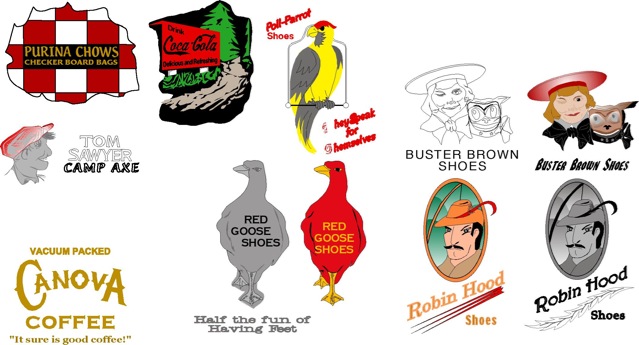
TOM SAWYER was a brand of boy's clothing made by the Elder Manufacturing Co., Inc. of St. Louis, MO.
A number of shoe manufacturers offered hatchets with their logo etched on the face. Red Goose Shoes had an etched hatchet and one with a decal. Robin Hood Shoes used two variations, Buster Brown had at least five, one of which was only fancy lettering.
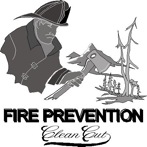
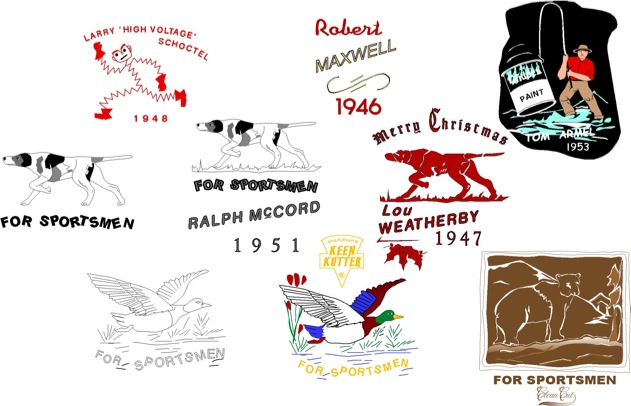
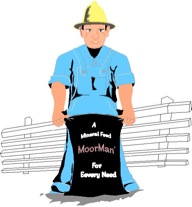
Some etched hatchets appear to be examples that were used primarily as advertisements or were possibly promotional in nature while. Others suggest that they were commissioned by a company as a commemorative gift for an individual; perhaps someone who was retiring.
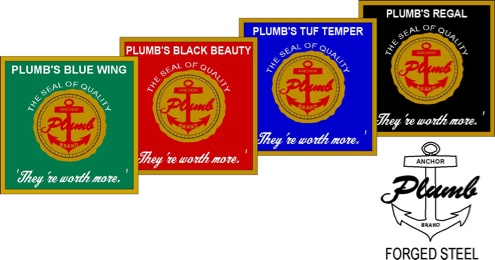
NOTES CONCERNING EARLY BRANDS
ANCHOR A carry-over from the original company, YERKES & PLUMB.
BLACK BEAUTY Possibly used as a sound-alike brand used by another company.
BLUE WING Also used by itself without the Plumb name.
PACEMAKER A brand used to describe a gold painted top line double bit western pattern.
PLUMB'S QUAKER CITY A combination of the Plumb name with a brand known to have been.
used by Supplee-Biddle (both original companies were located in Philadelphia.)
REGAL Used by a wholesale hardware company in the early to mid 1900s.
TUF TEMPER Possibly used as a sound-alike brand used of another company.
Plumb Anchor Brand markings with the words "FORGED STEEL" were stamped into the body of axes bearing the labels as depicted.
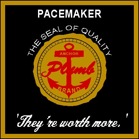

Note the words
SERVEALL FORGE CO.
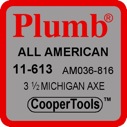
BRANDS and MARKINGS ... REGISTERED, TRADEMARKED and COPYRIGHTED
Like many other major manufacturers, the marketing schemes used by Plumb were repeatedly being updated. Some markings associated with the company when Fayette R. Plumb became involved were continued in one form or another up until 1980. Many new brands were added and readily became associated with the company. Others were used for goods sold to wholesalers. Quite frequently a wholesaler’s label would be affixed to one face of a tool and the name Plumb would be stamped on the opposite face. In many cases the label and mark appeared on the same face. As additional information becomes available even more markings used by Plumb are being discovered, especially those used outside of the US. Many of the Plumb brands and markings were either registered,trademarked or copyrighted but apparently there are others that were not.
LABELS INTRODUCED IN THE 1930s
Etching used on a PLUMB single bit axe.
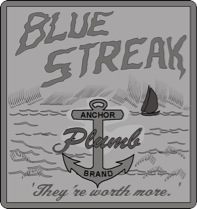
A booklet on Plumb and Other Philadelphia Makers is now available. Please refer to the Home Page for details. The booklet has more information than on this website.
HAMMER & HATCHET MARKINGS
Prior to the business becoming Yerkes & Plumb the major line of tools that were manufactured included hammers. Yerkes also made other forged tools and those lines of goods were continued after Fayette R. Plumb became involved. Indications are that Plumb added hatchets prior to adding axes to the line and those lines have withstood the effects of time. Plumb also added files to their production capabilities but they are considerably less known about than the other lines. The company continued to make hammers and hatchets after they were purchased by others and although axes were continued for quite some time, it appears that the mainstay of the Plumb brand still remains with hammers and hatchets. However unlike the earlier production, it appears that the Plumb tools made today are all made overseas primarily by Asian manufacturers.
Like many axe manufacturers, Fayette R. Plumb, or PLUMB as the company was commonly referred to, marketed axes in many parts of the world. In the late 1890s Plumb was furnishing tools not only throughout what is now the continental United States but also to Canada, South America, Australia, Germany and the west coast of Africa. Indications are that those territories subsequently were expanded to include other areas considered as parts of the Pacific Rim. The most common tools supplied included axes along with picks, mattocks and grub hoes.
In many cases Plumb supplied axes that were simplified. That is to say they were somewhat different from the axes manufactured for the North American trade. Such axes did not include as many elaborate etchings and the finishes were not always as refined as the finishes on axes sold in North America. They may have included simplified stampings, special labels and/or were even painted different colors and not in the same manner as on axes made for domestic distribution. But that was not always the case. In some situations the patterns varied to suit the preferences of the area to which the axes had been exported. Common variations involved the overall shape and preferred weights. This practice appears to have been most prevalent in regard to some axes manufactured for the Australian market. Plumb was not known to produce axes with what is called the “Spanish Eye” but that may be found to be untrue as additional information is discovered. There were situations where companies completely excluded any references or markings that would indicate who the actual maker was. In some cases it was to protect reputations or eliminate warranties. In others it was to increase sales.
The eye differences were quite obvious because the shape was round or a broad oval. They were not like the elongated narrow axe eyes common to axes used throughout North America. They were more like the eyes used in sledge hammers and picks. This is not to say that other North American, and even English and some European manufacturers did not export axe heads with elongated eyes. They certainly did but in many cases they provided less expensive axes to areas where obtaining a replacement handle or even the original handle was required to be furnished by the user. Many such handles were fashioned by hand and a round or oval handle was far quicker to shape.
Indications are that some axes that Plumb exported to Australia and New Zealand became know by a name that included the color used to accentuate the stampings or even paint the entire head. In addition to the coloring of the stampings there were small symbols that were often also stamped into the lower part of the cheek. Those too may also have been originally colored the same as the name stamping but like most axes used for an extended period of time or left to the elements, those color markings soon disappeared.
In the case of Plumb axes, many of the axes became known by the name of the color involved; Black Plumb, Blue Plumb, Golden Plumb, Silver Plumb, etc. This was based on the color of the head when it was sold. Some included stampings or touch marks in the shape of the designs depicted below. Those design names were also used to describe the axes heads; Star Plumb, Horse Shoe Plumb, etc. That reference system may have evolved from the choppers and other people that used the axes and probably not the company itself. At this point no relationship has been determined between the touch marks and the colors. Another theory suggests that the stamping related to the time frame in which the axe was made or even the importer/distributor but as yet no verification of that explanation has been discovered.

Marking and labels used on hatchets made by Plumb and under the Plumb name after the company changed hands.

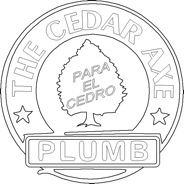

Symbols reported to have been used on Plumb axes sold in Australia. Another possibility is that the symbol represented a time frame or possibly a specific distributor. No complete clarification has yet to be determined. The Star and the Diamond have ben observed on axes made by other companies.
Who or what was WILMOT?
An Australian supplier?
An alias used by Plumb?
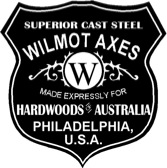
Two slightly different labels with similar markings.
What animal is depicted?
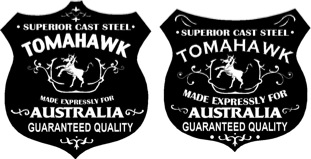
Facsimiles of labels used on some axes made by PLUMB. The black and white label was observed in the company label catalog, the red and gold label was observed on an axe exported to Australia.
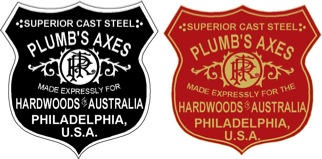
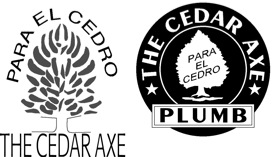
Markings used on some export axes and some axes used in the southwest.
Etched markings used on some axes used in southwest USA and Mexico.
SYMBOL MARKINGS ON AXES
Axes with a star mark as well as some other symbol markings on some examples suggests they were made for the export and possibly the Australian market. No conclusive evidence is known that verifies that axes with symbols as touch marks were guaranteed to be exported to Australia however numerous axes with such marks have been observed in Australia while considerably fewer have been observed in the US.
Research indicates that more than one system of weights and measures existed in Australia up until the mid 1900s. The fact that the Australians were using more than one system of weights and measures up until the beginnings of WWII and perhaps as late as 1960 may help to explain why Plumb chose to use a symbolic marking system. This was especially true in the early twentieth century and especially for exported axes. No doubt many axes so marked were never exported which helps explain why they are found stateside.
The utilization of designations that included the numbers 3, 3 2, 4, 5, etc. started to be used on axes in North America some time before the turn of the twentieth century and it, like money, may have been recognized before many individuals actually learned to read and especially for those who used axes. In many areas technological developments in Australia took considerably more time. Demands for uniformity became a major consideration at the advent of WWII and they had a major impact on many changes that were introduced starting around 1940.
A patent for the PERMABOND process was first applied for in 1954 and PLUMB was issued Patent No. 2,850,331 on September 2. 1958.
Facsimile of a labels used on handles prior to the introduction of Permabond.
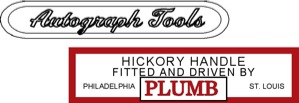
The TASMANIA AXE was also popular with other professional Australian wood choppers.
The representations are of early racing axes manufactured for use in competitive chopping events in Australia.
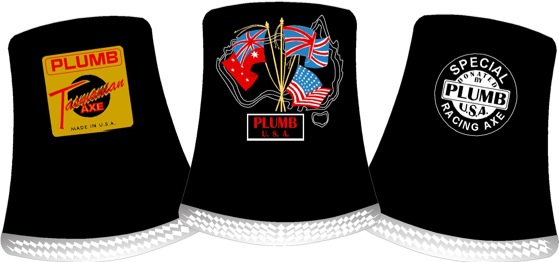
PLUMB RACING AXES
Axes made by the Plumb Co. had a significant impact on the harvesting of trees in many parts of the world including Australia and New Zealand. Various sources of information indicate that Plumb was one of the three earliest major North American axe manufacturers that exported axes to Australia. One of the supplemental advantages to supplying such axes was the input provided by indigenous choppers. One of the patterns attributed to such input was called the Tasmania pattern while another was the Gippslander.
PLUMB HANDLES
Like most striking tool manufacturers, Plumb furnished the bulk of their goods with handles that were installed at the manufactory. Their early handles were made of American Hickory and were finished in what was referred to as a natural finish. Such finishes had a clear coating applied directly onto the finished wood. Sometime prior to 1922 Plumb started to add a red coloring material to some of their handles. At the time they were also advertising that they were using select second growth American hickory. For many years prior to 1955 wood handles were held in place with a screw type wedge. Before that the traditional wedge was used.
As of this writing the earliest reference to a special bonding material being used to secure the hammer heads was in a copy of Popular Science Magazine dated September 1955. It is quite possible the process called Permabonding was used shortly before that date but as yet how much earlier has not been ascertained. Whatever the case, the use of Permabonding was included more and more in Plumb striking tools. Its distinct red coloring tended to supplement the red color used to finish the wood handles.
By 1955 some Plumb tools were offered with fiberglass handles. Those handles were red and some ends were dipped in a black, non-slip coating. The coating was applied to some hammers and some other one-handed striking tools but not to axe handles. A wood chopper requires a handle that will allow his hand to slide as the axe is being wielded. Wood handles continued to be used well into the 1990s and probably even after that.
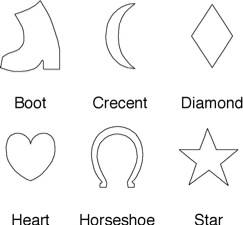
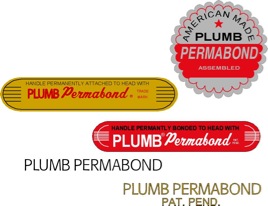
Marking used on some PLUMB single bit axes and hatchets. The letter “M” sometimes appears by itself and sometimes with a mark above the letter “M” which was from the top edge of the stamp. The letter may have stood for a significant distributor that sold axes so marked.
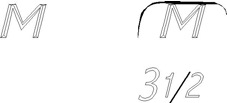
MORE INFORMATION:
Cross reference articles published on the YesteryearsTools
web site that relate to this article;
Yerkes. Jonathan
Champion Axe + McLaren Information (Publication Pending)

Comments, feedback and additional input are always welcome. Additional information or suggested corrections should be accompanied by verifiable sources or copies of same.
Please Contact:

Click on one of the other topics in the menu box at the top to go to a different department or article.
ACKNOWLEDGMENTS
Some information used in this article has been obtained from different sources including but not limited to:
Bartlett, Russ, Novi, MI., Personal Correspondence, 2010
Hardin, Lloyd, Former Plumb District Manager Fayette R. Plumb, Inc. (Personal Communication)
Hardin, Lloyd, 1856-1922 Plumb Tool Catalog Reprint w/Additions, Villa Ridge, MO., 2004
Hardin, Lloyd, 1954 Plumb Tool Catalog Reprint w/Additions, Villa Ridge, MO,, 2003
Nilsson, Norm, (Numerous Personal Communications)
Plumb, Inc.: Illustrated Catalogue & Price List Fayette R. Plumb, (w/ 1889 Supplement) Philadelphia, PA., 1888
Plumb, Inc.: Plumb Catalog No.36, Philadelphia. PA., 1936
Plumb, Inc.: Plumb Catalog No.51, Philadelphia. PA., 1951
